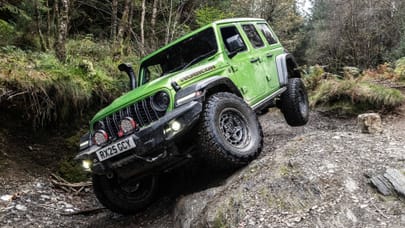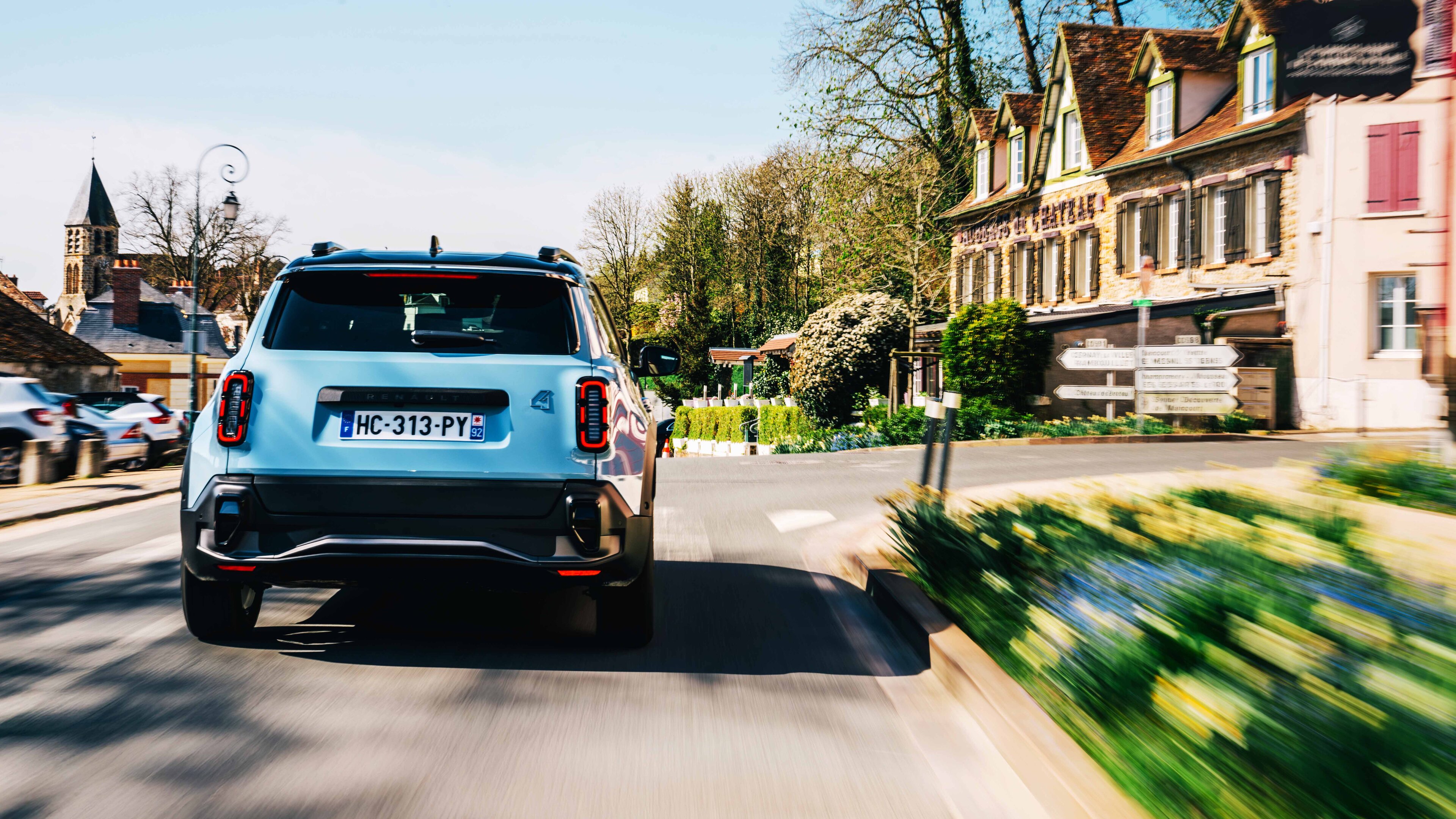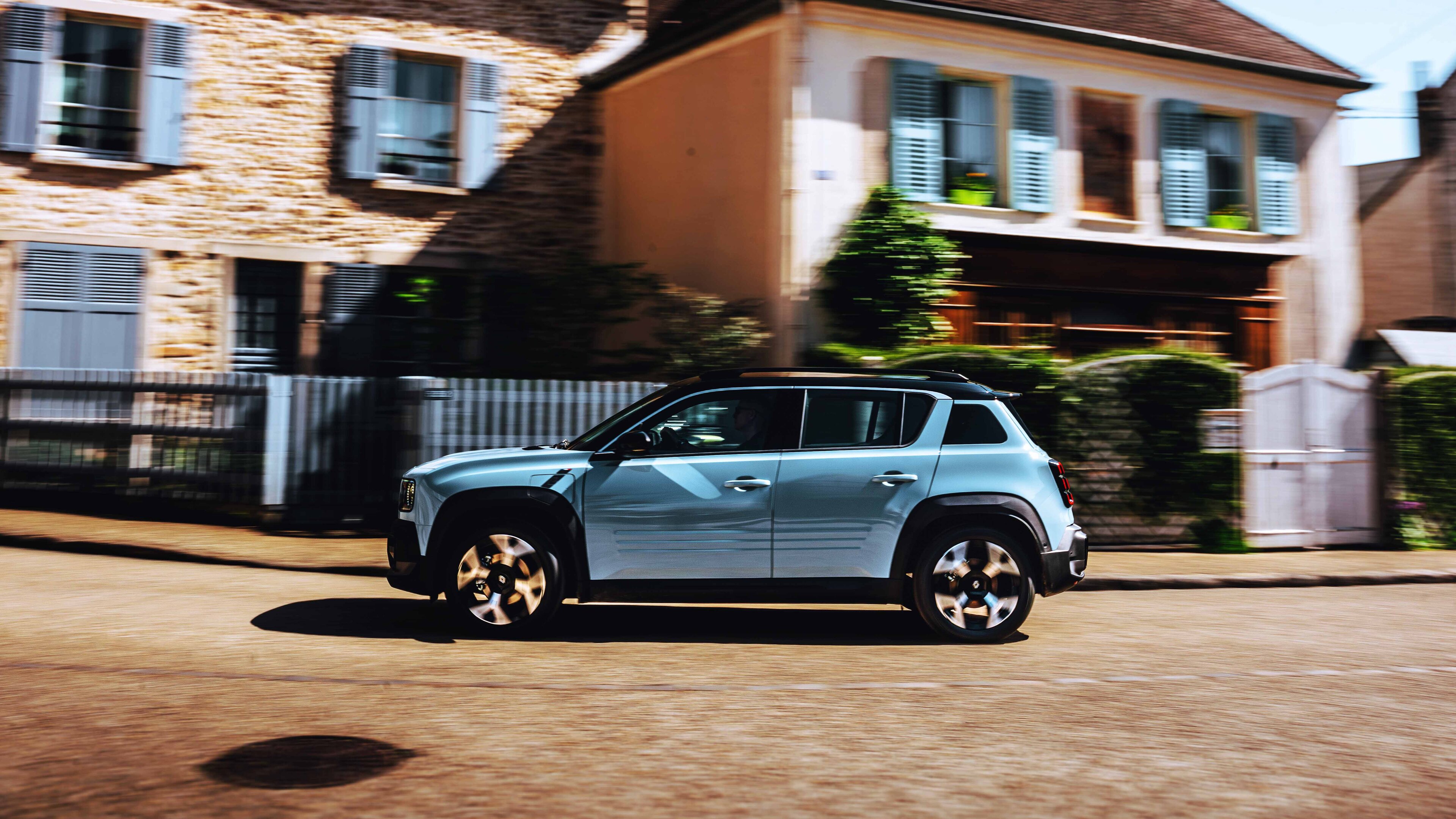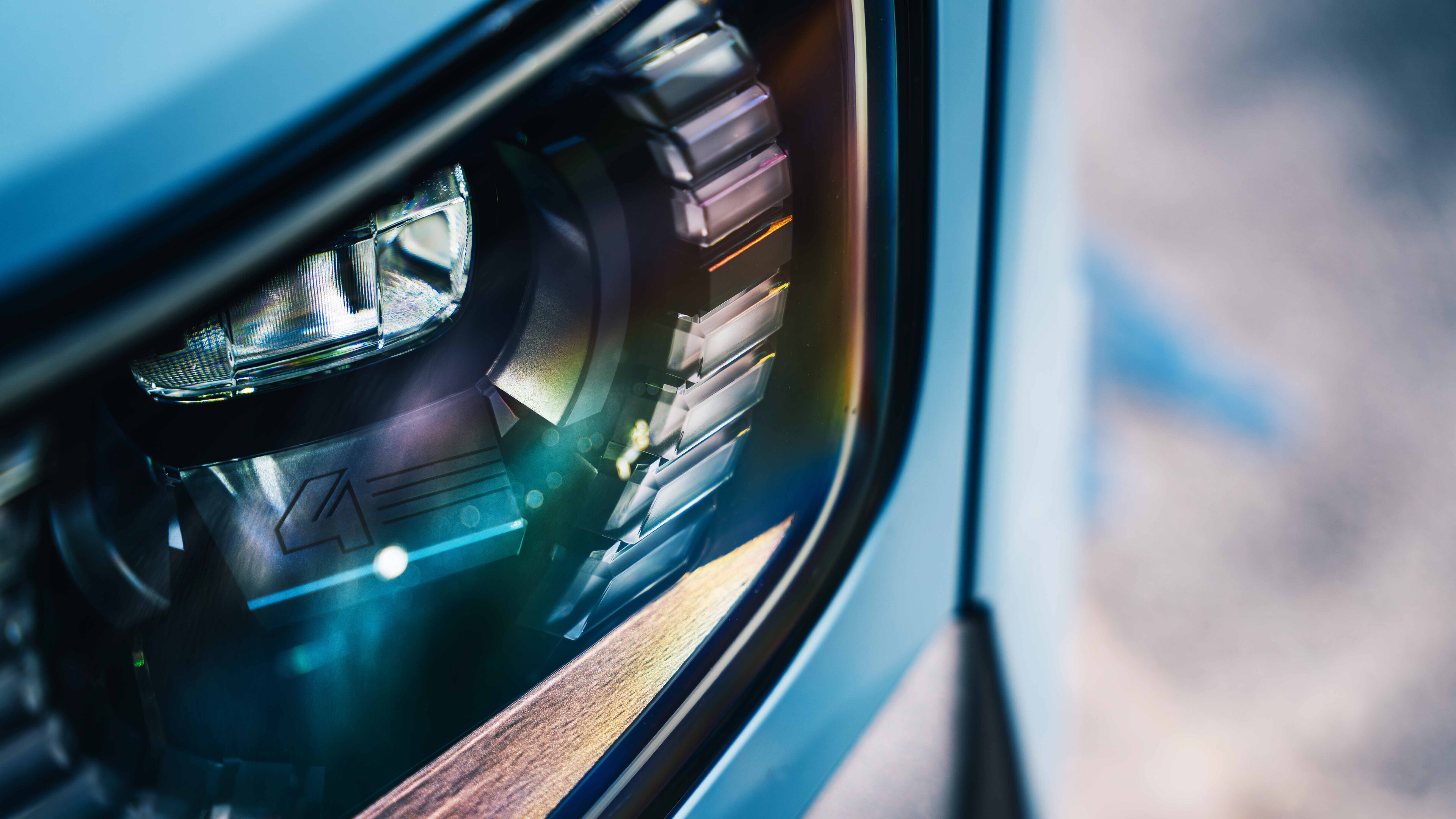
Vive La Renaulution: what makes the Renault 4 our 2025 EV of the year?
Renault did a magnificent job with its revival of the 5 hatchback... turns out it was just getting warmed up
Dateline Morocco, sometime in the mid 1990s. A white Renault 4 is ascending the 2,200m Tizi n’Tichka pass over the Atlas, gateway to the Sahara. I’m taking liberties with the primitive engine and brakes, using short straights between the hairpins for sneaky overtakes of all the other white Renault 4s. “It’s like being on a car launch,” says my passenger, who knows the things we young and stupid road testers got up to when let loose in a fleet of identical new cars. But these aren’t new. They’re bashed up renters. For many years, the white Renault 4 was the standard issue cheap hire car in Marrakech.
For decades that original R4, launched in 1961, did faithful service on many other thankless tasks in French-influenced parts of the world. It was cheap, versatile – the world’s first hatchback – simple, tough and utterly unpretentious. Renault sold a staggering 8.1 million. Yet most us have forgotten how successful the 4 was, doubtless because they’ve mostly decomposed now, much like our memory of them. So the new one has to stand on its own four wheels, rather than bask in reflected glory.
Especially as in spirit this new 4 isn’t a 4 at all. Not because it is electric, but because it isn’t especially cheap. If you want a modern Renault 4, a car designed with a gimlet eye to every conceivable means of saving a centime, Renault will soon have one. The electric Twingo.
Photography: Huckleberry Mountain
That first 4 was a crossover decades before crossovers became a thing. If you want to find a survivor these days, go find an apparently deserted French farm at the top of a rough steep track. So Renault is being eminently sensible in selling the new 4 that way. As a crossover for the small family, it’s nicely sized, with an extra 80mm in the wheelbase versus the new 5.
So, provided the driver raises their seat a little, there’s enough room for the extremities (toes, kneecaps, scalps) of an adult behind them. The boot is a deep 420 litres and the front passenger seat folds forward to take your DIY planks or cello. A section of the bumper lifts with the tailgate, deepening the aperture. It’ll even tow a 750kg trailer. The R4 is just 1.8m across the body, and feels handy down narrow streets and lanes.
It hardly takes an automotive Inspector Clouseau to figure out this car is a close relative of today’s R5. Indeed pretty well everything under the bodywork is the same, except for the longer wheelbase, 50kg of extra weight – still very light for an EV this size – and slightly recalibrated springs and steering. So that brings a 148bhp motor and 52kWh battery in all UK specs. Renault’s excellent screen and control system is here, with its satisfyingly abundant physical controls.
On the outside through, it’s wholly other. It repeatedly riffs off the OG 1961 ancestor. For those keeping score... The face was once a single chromed frame with the round lamps at the end and grille in the middle, now the chrome is substituted by an LED perimeter track. A cut line between this and the wings follows a gap between the original’s wings and forward opening bonnet/grille assembly. On the sides, tall and flattish, you’ve ridged door panels, like the R4 GTL had. The reverse raked rear door window and trapezoid rearmost side window keep the faith with the characteristic rhythm of the old car’s fenestration. An upright tailgate and tall narrow little lamp clusters complete the picture.
Top Gear
Newsletter
Thank you for subscribing to our newsletter. Look out for your regular round-up of news, reviews and offers in your inbox.
Get all the latest news, reviews and exclusives, direct to your inbox.
Settled into the well bolstered seat, I’m reminded that in all the electric Renaults you need to drive with fingertips and toes. The steering is light at low speed, and the brake pedal gets a lot of action for just a gentle initial caress.
I soon reconfigure the drive modes to soften the initial accelerator response, because the example we’re in leans into the crossover business and runs optional Goodyear all season tyres. Maybe it’s because they’re still brand new and waxy, but on the dusty dry roads around Paris they don’t have a heap of traction. The inside front one easily spins out of tight corners.
It’s a small thing compared with the positives. Although the suspension’s springing is a little softer and calmer than the 5’s, the steering is quickish and accurate, working in harmony with the suspension to feed you smoothly into and through the bend. At first blush the steering feels remote, but push the cornering effort harder and sensory messages start to come up from the tyres. Messages of the sophisticated multi-link rear suspension keeping everything nicely precise and balanced front to rear. It serves you with a smile.
Not unexpectedly, that all translates into a fairly busy ride. But it’s not harsh, and shrugs off biggish bumps and dips without concern. The tyres and suspension are also quiet, which helps you ignore the road level perturbations. And bumps don’t knock you off line.
Power is more than enough for suburbs and B-roads, but it tails away at autoroute speed. My day in countryside and villages, not trying to be gentle but without autoroute stretches, yielded the equivalent of 215 miles. The WLTP range is 248. That’s perfectly OK for a car this price.
The 4 will be between £27,000–£32,000 in the UK, all versions coming with a 52kWh battery, 148bhp, heat pump, the big central screen and 18in alloys. When Omoda, Leapmotor, GWM Ora, Haval and the like are crowding in with their drastic structural Chinese cost advantages, Renault is able to pay factory workers in France by deploying its own not so secret weapon: heritage, thumbing its history book of much loved old designs, the 4 and 5 and Twingo.
Come for the looks... stay for the value, easy ownership, smart tech and genuinely happy drive
Some critics say this means Renault designers are showing a failure of imagination, as if they’re merely copy/pasting old designs onto new bones. But point one, why not do it, as it’s a heritage those new rivals would kill for? And point two, it’s actually very hard to make these designs look credibly modern as well as spiritually old.
In 1961, the R4 was compared to a pair of jeans because it was a super practical universal, and no one judged you for it. Ideal for the fluid social climate of its first decade. This mid spec R4 has quasi-denim upholstery. I just found an old photo of Jane Birkin and Serge Gainsbourg, he in jeans and unbuttoned denim shirt, she in cutoffs, gambolling in the golden French sunlight. But we’re in the age of artfully distressed, strategically holed £500 designer denims, so that metaphor fails.
Anyway all this classic car stuff needn’t matter if you don’t care about car design history or cultural resonance. The new Renault 4 is a smart little modern car in itself, recognisably different from the waves of generic looking stuff washing up in dealers all over the country. In the EV age, design matters more and more.
Renault’s masterstroke is to build not just one small EV but a pair of them that are great cars, going way beyond relying on their design alone. The R5 is already our Car of the Year but the R4 pips it - to both Best Compact EV and the big one... our overall Electric Car of the Year - because it’s got the R5’s charm but space to go with it. Come for the looks... stay for the value, easy ownership, smart tech and genuinely happy drive.











